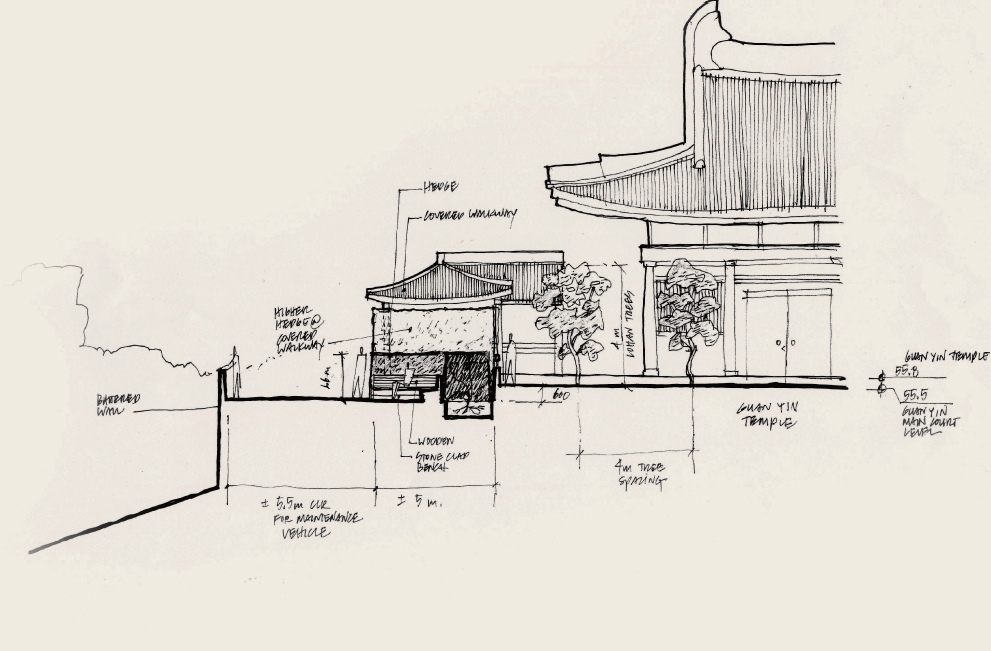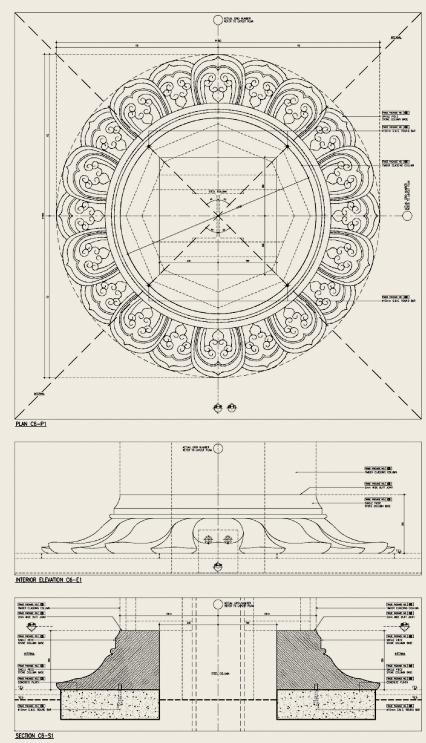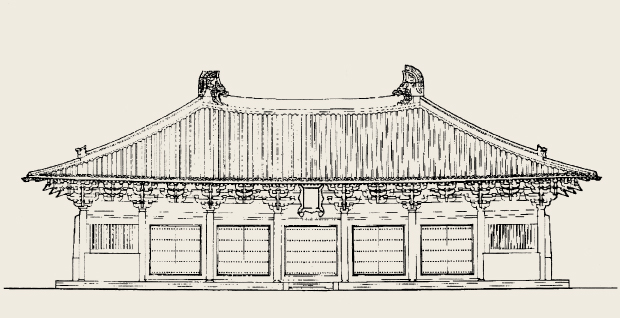






The idea for the development of Tsz Shan Monastery germinated with Mr. Li Ka-shing. From a young age, Mr. Li was influenced by his elders, and had developed a life-long affinity with Buddhism. In 1980, Mr. Li established a personal foundation to cultivate a culture of giving, and has since pledged to donate one-third of his personal assets to advance medical research and education, and alleviate poverty. Mr. Li considers the Foundation to be his “third son”. The hardships Mr. Li endured in his early years to transcend his own poverty to build a global business enable him to focus on initiatives that create a lasting positive impact for humanity.
With an enlightened spirit, Mr. Li strives to facilitate real change in the world. Mr. Li’s aim was to build Tsz Shan Monastery as an institute of Buddhist practice and learning, to provide a place for quiet contemplation and purification, and to foster a culture of sharing and giving. Mr. Li believes that everyone has a “bright pearl, long obscured by dust and toil, and when the dust is gone and its light shines forth, a myriad of illuminations blossom across our mountains and rivers.”
Planning and construction of Tsz Shan Monastery began in 2003, and it was completed more than ten years later. Tsz Shan Monastery is a Chinese Buddhist monastery established for the preservation of the inheritance of the Dharma preached by Śākyamuni Buddha. To date, the Foundation has contributed HK$3.5 billion to cover the land acquisition and construction costs, as well as the Monastery’s operating expenses. Tsz Shan Monastery has been open to the public since April 2015.
Planning and construction of Tsz Shan Monastery began in 2003, and it was completed more than ten years later. Tsz Shan Monastery is a Chinese Buddhist monastery established for the preservation of the inheritance of the Dharma preached by Śākyamuni Buddha. To date, the Foundation has contributed HK$3.5 billion to cover the land acquisition and construction costs, as well as the Monastery’s operating expenses. Tsz Shan Monastery has been open to the public since April 2015.

To visit Tsz Shan Monastery from the city, you are struck by a sense of calmness – both in the natural environment and in the atmosphere of the majestic monastery. Its style is inspired by the more solemn and elegant styles of the Tang, Northern Song, Liao and Jin dynasties, which existed over a period of about 600 years beginning in the 7th century.
The monastery appropriates elements of nature in its planning as well. Tsz Shan Monastery is located on a hilly site with an expansive sea view to the front. The core of the monastery consists of three main buildings placed along a central axis. Each building and associated courtyard is placed on platforms rising up the hill, well defined with surrounding corridors. On another axis branching off from the Grand Courtyard, devotees are led into the presence of the colossal image of Guan Yin, passing the Universal Gate.

Throughout its halls and its grounds, Tsz Shan Monastery provides many spaces for contemplation, both open or intimate, formal or seemingly unplanned. But even inside its most stately buildings, nature is present throughout: dark African padauk wood, wavy white-grey granite, marble and bronze are the monastery's most important building materials. They are ones of texture and richness with a connection to origin.

Buddhism has a deep connection with nature and so too does the monastery. Within its walls there are beautifully manicured gardens and trees as well as those that remain untended. Trees are of particular significance and many types were brought in to Tsz Shan Monastery alongside indigenous varieties. But what is most important in Tsz Shan Monastery's design is that it blends and unifies its buildings with nature and creates an ideal space for meditation.
The Main Gate, the Maitreya Hall and the Grand Buddha Hall are located on the central axis of the Monastery. Situated to the sides of the Maitreya Hall, are the Drum Tower and the Bell Tower, which is also located above the Great Vow Hall. The Zen Hall is located on the western wing of the Grand Courtyard.
Main Gate
Joyful Terrace
Maitreya Hall
Bell Tower and Drum Tower
Grand Courtyard
Grand Buddha Hall
Great Vow Hall
Universal Gate
The Universal Gate is the second largest hall of the monastery, with a width of five bays and a height of fourteen metres. In its centre there is a wish-fulfilling, six-armed Guan Yin (Cintacakra Avalokiteśvara) statue. The walls on its two sides are carved with calligraphy recording the Ten Great Vows of bodhisattvas Samantabhadra and Guan Yin showing their deep conviction to save all sentient beings.
Recorded in the sutras, Guan Yin (Avalokiteśvara) resides in Mount Potalaka. The naming of the circular Brilliance Pond in front of the Universal Gate Hall is based on this. In the form of two concentric circles, the Pond has a diameter of eight metres. While water in the Pond keeps flowing, it looks like a mirror from afar, signifying the contemplation of wisdom.
Guan Yin Statue
The Guan Yin (Avalokiteśvara) Statue has a height of 76 metres, comprising a 70-metre-tall bronze-cast white Guan Yin statue (including a three-tier bronze lotus platform) built upon a 6-metre high granite base. The statue is coated with white fluorocarbon self-cleaning paint and is modeled on sculptures of the Song dynasty.
Guan Yin has a compassionate and graceful demeanour and on her topknot there is a small image of Amitābha, implying the blessings and protection received through his immeasurable power. In her right hand she holds a wisdom maṇi pearl and in her left hand a vase, from which she pours pure water to cleanse the phenomenal world. She wears a keyūra necklace and her clothes drape elegantly. Her body leans forward as she looks down from above on all beings, guiding them to enlightenment with her compassion and wisdom.
The Compassion Path is the straight, wide pathway that stretches from the Universal Gate Hall to the Guan Yin (Avalokiteśvara) Statue. On its two sides there are eighteen aged Buddhist Pines. In the middle of the Path, right in front of the Statue, there is a large bronze water vessel known as the Thousand Wishes Pond. Visitors making a water offering to Guan Yin pour water into the Pond.